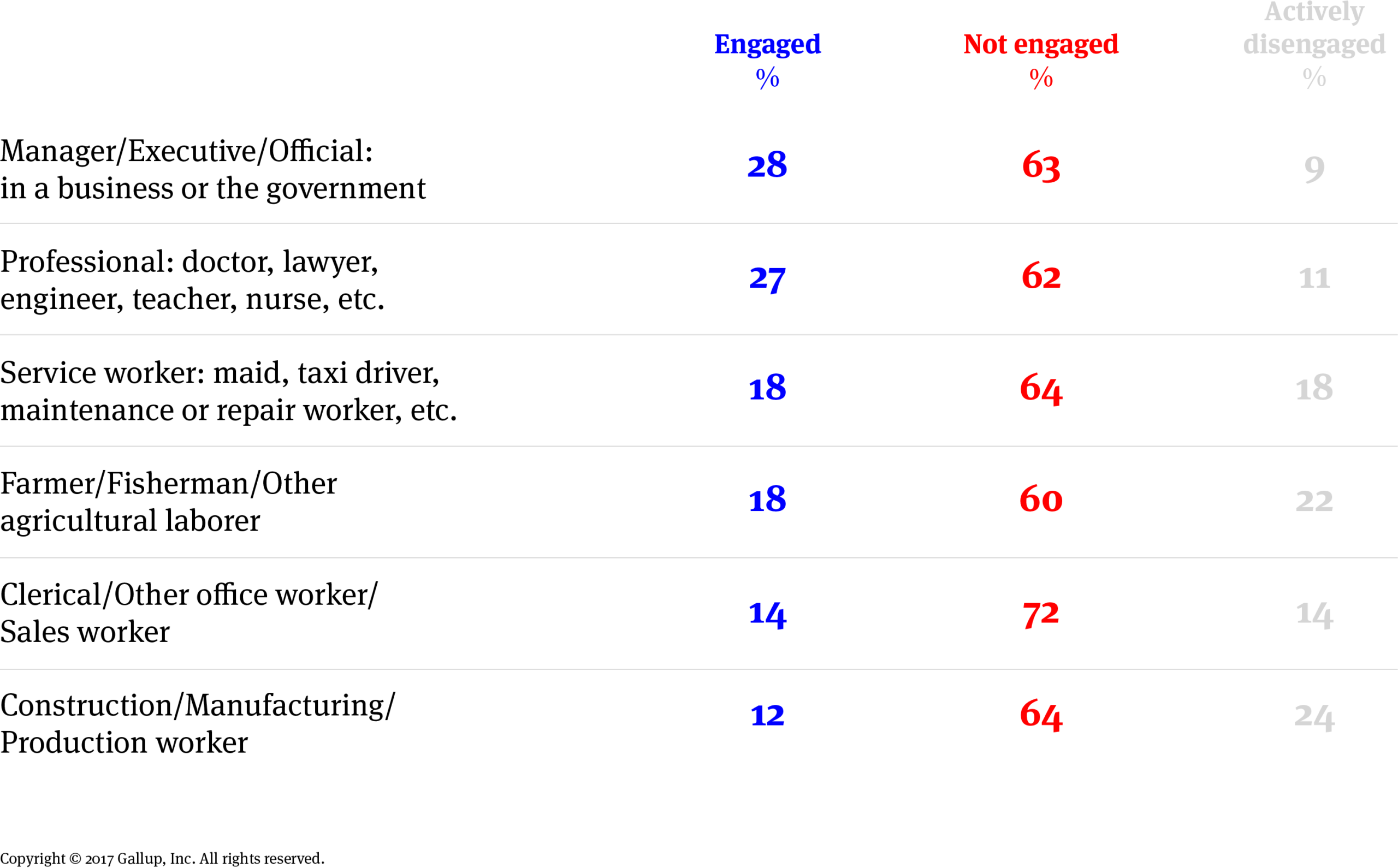Despite technological innovations and advances, productivity growth has stagnated or declined the world over.
It’s a strange phenomenon considering that great minds of the early 20th century, such as the architect Frank Lloyd Wright and the economist John Maynard Keynes, predicted that by now we would not only be working less but would also be more productive than we actually are today.
So, what went wrong?
It’s obviously a multi-facetted issue but some explanation can be found in Gallup’s latest State of the Global Workplace report.
The report summarizes a wealth of data on how effectively employers and countries around the world are using the human capital in their workforces.
Now brace yourself. It’s time for numbers.
Notably, it finds that 85% of employees worldwide are not engaged or are actively disengaged in their job – while only 15% of employees are actively engaged in their job.
And it’s even worse in Western Europe where only 10% of employees are engaged at work – 71% are not engaged, and 19% are actively disengaged at work.


